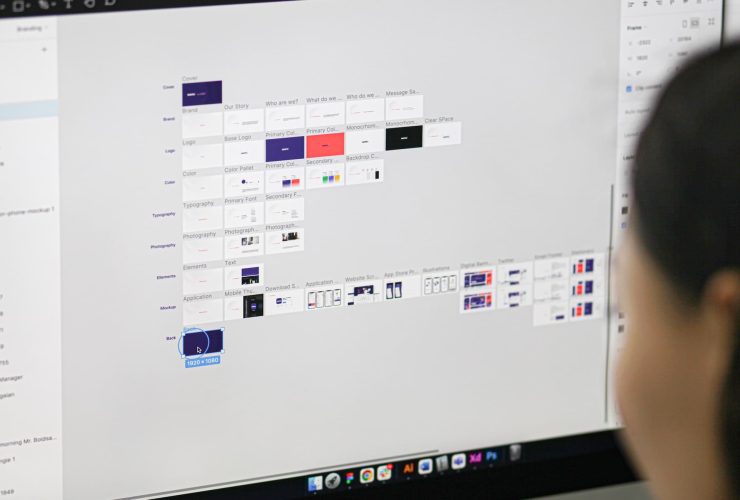There’s more noise and competition in the market than ever before. It used to be that a company could increase its market share through word of mouth and a quality product or service alone. Unfortunately, many businesses that rely on quality or word of mouth alone are becoming increasingly irrelevant as the rate of change and competitive landscapes in the digital spheres of business growth continue to evolve and increase in influence. Attention spans are shorter than ever, untapped marketshare is more accessible that ever before but sustainable growth can still be created by positioning your business for unshakeable brand loyalty. If you consider the quality of your product or service to be the primary driver behind your growth, think again. New and innovative quality driven business are in abundance and they’re more accessible than ever before. If you want to spend all your money on marketing your business without positioning it, think again. Marketing can get you some quick traction, but most wider markets will not trust your company based on your marketing efforts alone. Volume does not always equal sustainable traction. Businesses that don’t define, differentiate or place emotional value on their product or services by building a strong brand identity are being left in behind and there is only one reason why. They haven’t tapped into the undying power of building an unstoppable brand identity that clearly differentiates them from the rest of their market and is clearly aligned with their unique value proposition.
“Businesses that don’t define, differentiate or place emotional value on their product or services are being left behind and there’s only one reason why…”
Receiliart
Modern consumers want more from brands than they used to. The scales of relational power have tipped and they are now more in favor of the customer. A large reason behind this shift is the ever increasing access to alternative businesses on a global scale. If you’re planning on building a strong brand identity that meets the experiential expectations of your market you need to stop thinking of your brand identity as purely being an aesthetically-driven decorative paper and start seeing it as the visual articulation of your calling, your destiny and your mission as a company. Start seeing it as a distinct, clear and unifying expression of all that your company aspires to be and an accurate representation of your potential. See it as an anchor into the future that pulls you towards greater levels of impact and growth, while simultaneously bridging the gap of fear that might exist with prospective customers due to any unfamiliarity between you and your target audience.
More research on this topic: click here

Step 1 – Understand And Identify The Exact Principles That Drive Your Brand Identity
Typically, before the building of any commercial structure, an architect or engineer is hired to ensure that the building is built according to specification and distinctly recognizable. Building your brand identity is no different, it’s the commercial representation of the visual communication for your business and the way that it’s designed and purposed plays a direct role in its ability to rise high above the competition, as well as dictate how you feel once inside, along with who you perceive yourself to be. Think of a Nike sponsored athelete, or even an employee. They’re confident, ambitious and driven by success because of the brand that stands with them. Knowing this, it becomes pretty clear that when you’re building a strong brand identity, you need to first identify the ultimate goal behind the brand identity. This allows you to establish a clear target that you want to achieve. Without establishing a clear target, how will you ever know if your goals have been achieved?
What Is Your Primary Goal Behind Building A Strong Brand Identity?
- Is it to stop losing customers and sales to competitors or alternatives that have positioned themselves as the better solution?
- Is it to capture a new segment of the market that hasn’t yet seen you as credible or trustworthy?
- Is it to become more effective at communicating your core message and value proposition to the market?
- Or is it because your company’s current branding is making you look cheap, ordinary, unprofessional and selling you short every time a prospective customer comes into contact with your business – so you need to align it with the value of your product or service?


Step 2 – Uncover Exactly Who The Target Market Or Audience Is That Is Crucial For You To Attract
Every target market has a particular way in which they expect to be communicated to through the branding and digital experience of the businesses they choose to buy from. Consider it to be much like a ‘standard’ of experience that they expect you to deliver. Some target markets have lower standards, however most of them have much higher standards because they subconsciously believe their purchase decisions to be a reflection of how they see themselves. In this instance, it’s important to identify your target audience and the ‘standard’ of brand experience they are typically drawn to, but also remember that even if your target audience has a lower standard than usual, people are drawn to brands that provide a great first impression. So either way, building a strong brand identity is a win-win. The better the first impression is that you build, the more likely you are to scoop up more profitable market share in the long run.
“Every target market has a particular way in which they expect to be communicated to through the branding and digital experience of the businesses they favor.”
Receiliart
Remember:
Many businesses make the mistake of applying easily accessible template-like design, that is of a ‘higher-than-average’ standard for their brand without realizing that the style of design they’ve choosen makes them look like everybody else, because countless other businesses are using that same design style due to its accessibility. This defeats the purpose of the creating a unique brand and first impression. This is common among SaaS companies, where it is difficult to distinguish one SaaS from the next. These business often suffer from high churn rates, because customers very quickly become bored with the brand experience. They usually feel there is nothing distinct or unique about the company to merit their engagement. That’s why only the best stand out.
Step 3 – Establish and Clearly Outline Your 2 Year, 5 Year and 10 Year Growth Goals
One of the most underrated but incredibly powerful aspects of creating a strong brand dientity that has been anchored to your 2 year, 5 year and 10 year goals is its ability to actually pull you towards a future visual expression of your business by building a strong brand identity that is aligned with the 10 year version of your business. While you should always be focused on identifying your core strengths and brand positioning opportunities in the market, you should never be building a brand identity that is a representation of where you are right now as a business. This is the #1 mistake that 99% of companies make when attempting to build a strong brand identity. You should always be focused on building a brand identity representative of the business you want to become, because it allows you to leverage the power of anchoring your future self within the present value of your business so that you’re literally pulled into becoming that superior form of business. It’s not just setting about setting a world-class standard for your business, it’s actually creating a psychological imprint into your identity, for which you already carry the seeds of that future-self, the nature of which that brand identity represents.

Step 4 – Explore Ways You Can Maximize Ideal Buyer Alignment When Building A Strong Brand Identity
Ideal Buyer Alignment might sound fancy, but it’s really just aligning your strengths and core value proposition to your dream customers and making sure that the brand identity you are building is fully aligned with these ideal buyers in the market, as well as the profitable segments you wish to capture. An easy way to understand this is by trying to picture how successful Nike would be if they positioned the visual communication of their branding the same way that Zara did, or worse, if they just threw something together and hoped to attract the level of marketshare and leadership that they currently hold. The world best brands pay close attention to making sure that their brand identity and branding strategy is closely aligned with the type of image they want to project and the types of ideal buyers that they want to align with.
“It’s really just aligning your strengths and core value proposition to your dream customers.”
Receiliart
Remember:
Branding and digital experience is one of the hottest areas for a business to compete through as they are both driven by the stimulating the feelings that a customer has towards your product or service. These feelings are very hard to replicate or commoditize when you’ve truly honed in on your unique position and voice within the market. While we’ve often been taught (and may incorrectly believe) that customer buying behavior is driven by logic, studies have proven that it’s actually driven by emotion.

Step 5 – Create A Clear Set of Guidelines For The Use Of And Execution Of Your New Brand Identity
There’s nothing worse than seeing a brand identity that has enormous potential but has been applied in a scrappy and unprofessional manner. Bigger most definitely does not equal better when applying your brand identity across your specific touchpoints. Remember, your brand identity is a distinct message to your market and just like any form of communication or message, how you deliver it can make or break the message itself, not matter how impactful you believe that message may be. This is why brand guidelines are vital to maintaining the integrity and consistent execution of a strong brand identity.
“Building a strong brand identity means creating a distinct message to your market and just like any other form of communication, how you deliver it can make or break the message itself…”
Receiliart
The Importance of Identifying Your Preferences In Style Of Communication
Ultimately, the process of building a strong brand identity should aim to be an accurate expression of your core values and leadership, vision and mission that you have as a business. So naturally, it’s important to identify potential preferences that you have in style of communication. This will dramatically reduce the chances of building a brand identity that is an inaccurate expression of the intrinsic values that you hold, making sure that who you project your business to be through the perception of you brand identity is aligned with how you actually operate and interact with your target market. Your target market will always be able to tell if there’s misalignment or misrepresentation in this area, so it’s crucial to get this right.





